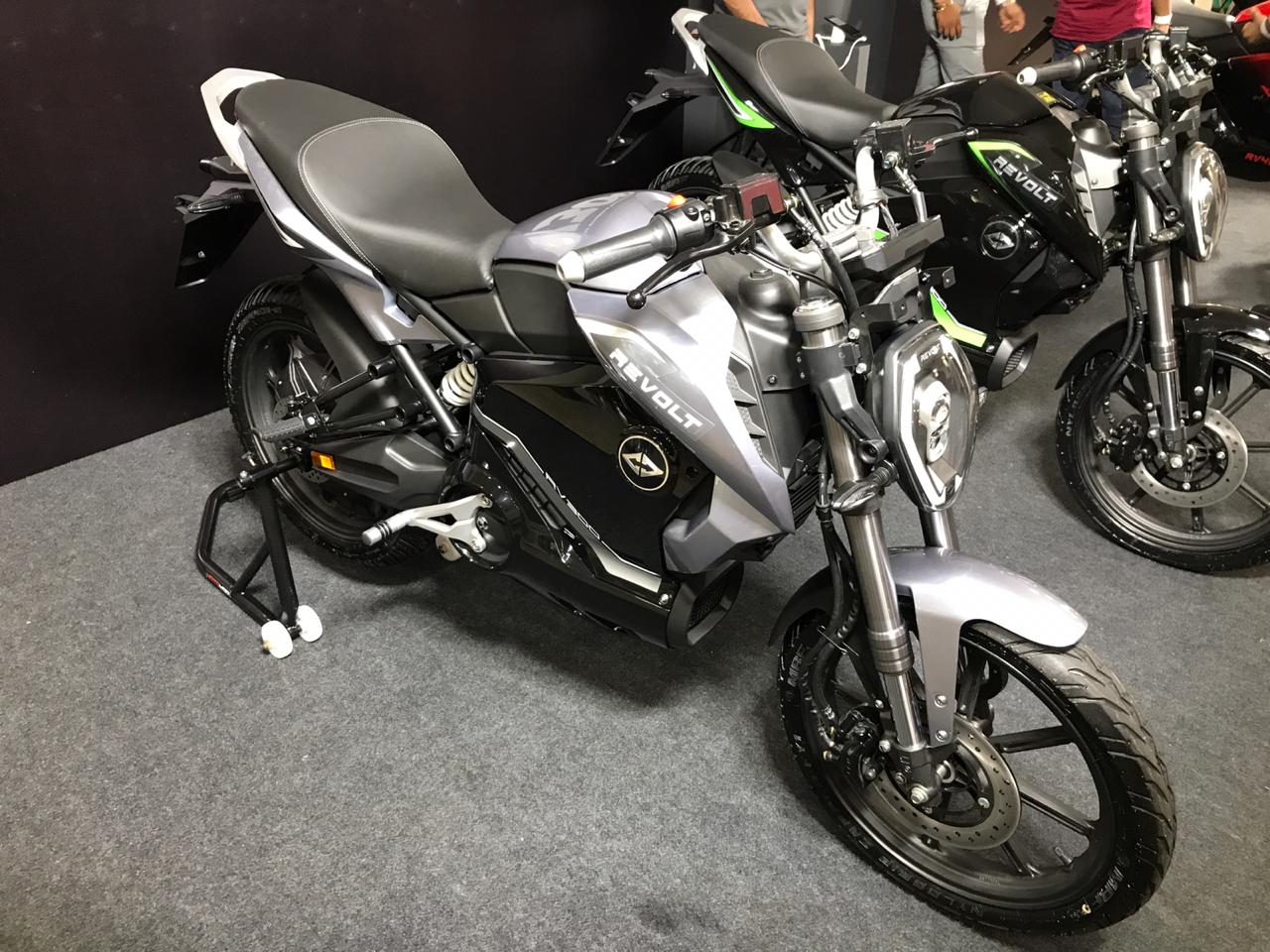Revolt RV300 Electric Bike: Picture Gallery
Published On Aug 30, 2019 12:52 PM By Gaurav Sadanand for Revolt RV300
- 1716 Views
- Write a comment
Though the RV300 looks identical to its elder sibling, the RV400, there are a couple of crucial factors that separate the two

At the launch of the RV400, Revolt Motors took everyone by surprise by introducing a cheaper model called the RV300. It is priced at just Rs 2,999 per month under the company’s 37-month ‘My Revolt Plan’. To put things into perspective, you'd be paying only around Rs 1.11 lakh at the end of the three-year tenure. That makes it as expensive as Apple’s flagship iPhone. Plus, this cost also covers the bike’s insurance, registration and service costs. While the RV300 looks identical to its elder sibling, the RV400, there are a couple of crucial factors that differentiate the two. Here’s everything you need to know in an assortment of detailed images.
 The smaller price tag of the RV300 makes it quite obvious that the bike packs a smaller battery pack. In this case, it gets a 60V 2.7kWh lithium-ion battery as opposed to the RV 400’s 72V, 3.24 kWh setup.
The smaller price tag of the RV300 makes it quite obvious that the bike packs a smaller battery pack. In this case, it gets a 60V 2.7kWh lithium-ion battery as opposed to the RV 400’s 72V, 3.24 kWh setup.
 The second biggest difference is the powertrain. In essence, the RV300 employs a 1.5kW hub motor compared to the RV400’s conventional 3kW electric motor that resides within the chassis. The setup is capable of offering a company claimed range of 80-180km, which is a smidge more than the top-spec model.
The second biggest difference is the powertrain. In essence, the RV300 employs a 1.5kW hub motor compared to the RV400’s conventional 3kW electric motor that resides within the chassis. The setup is capable of offering a company claimed range of 80-180km, which is a smidge more than the top-spec model.

A smaller battery also results in a slightly lower charge time of 4.2 hours for a full charge compared to the RV 400’s battery which takes 4.5 hours.

It gets three power modes - Eco, Normal and Sports - which offer restricted speeds of 25kmph, 45kmph and 65kmph respectively.

The RV300 also comes with a couple of unique features such as six-position adjustable rider’s footpeg as opposed to the two-position adjustment on the RV400.

Revolt hasn’t compromised on the feature list despite pricing the RV300 a lot lower than its sibling. It still gets 4G-enabled app-based features like SOS battery delivery, battery status check and geo-fencing. That said, the wireless key, remote start function and artificial sounds are only available on the premium RV 400 variant.

The RV300 has a higher ground clearance of 225mm (10mm higher than RV400) which means tackling Indian road conditions should be a piece of cake. Consequently, it features a taller seat height of 826mm.

Differences even extend to the type of swingarm. The RV300, for instance, features a box-section swingarm while the RV400 makes use of an aluminium unit. As a result, the RV300 has a shorter wheelbase of 1320mm (30mm shorter).

Both bikes use the same 240mm disc up front paired with CBS (combined braking system).

However, the rear disc in the RV300 is significantly smaller at 180mm as opposed to the RV400’s 240mm disc.

In terms of suspension setup, the RV 300 uses an upside-down fork at the front and a monoshock at the rear with a screw-type preload-adjustment.

It’s 17-inch wheels come wrapped in a 90/80-section tyre up front and a slimmer 110/80-section rear tyre. In contrast, the RV400’s gets a marginally fatter 120-section rear tyre.

Last but not the least, the RV300 is offered in two different colours - black with fluorescent green highlights or silver.
